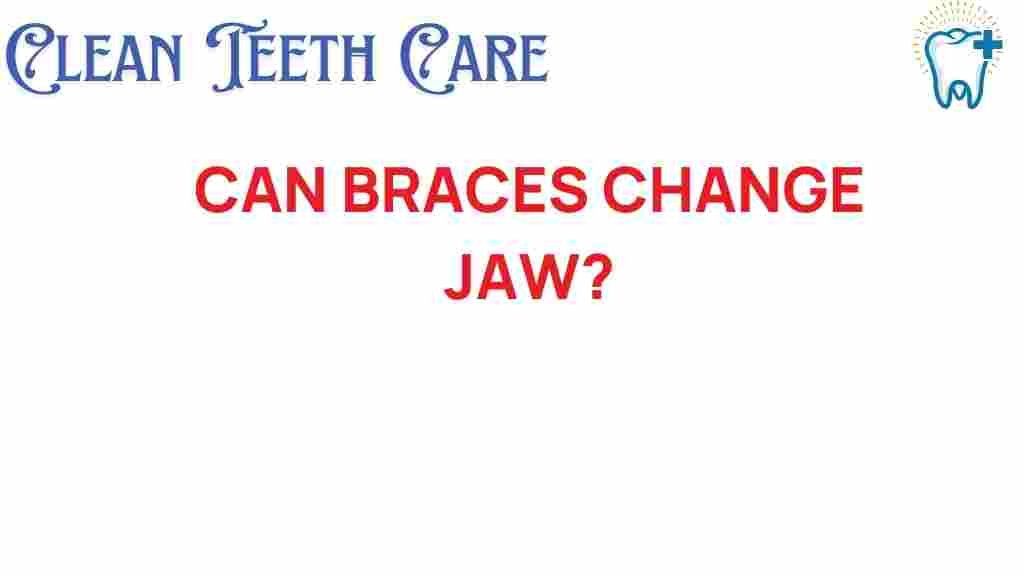Can Braces Transform Your Jaw Structure?
When considering orthodontic treatment, many people wonder about the impact of braces on their overall dental health and facial aesthetics. The primary purpose of braces is to correct teeth alignment, but they also play a significant role in transforming jaw structure. This article will explore the relationship between braces, jaw structure, and the benefits of orthodontics, providing a comprehensive understanding of how these treatments can enhance your smile and improve your overall oral care.
Understanding the Role of Braces in Orthodontics
Braces are dental devices designed to correct misaligned teeth and jaws. They consist of brackets, wires, and bands that work together to shift teeth into their proper positions. The primary focus of braces is on teeth alignment; however, they can also influence jaw structure in several ways:
- Alignment Improvement: By correcting teeth positions, braces help in achieving a balanced bite.
- Jaw Growth Stimulation: In younger patients, braces can guide jaw development as teeth are moved into alignment.
- Facial Aesthetics: A well-aligned jaw contributes to a more harmonious facial appearance.
The Importance of Jaw Structure in Dental Health
The jaw structure is crucial for overall dental health. Misaligned jaws can lead to various issues, including:
- TMJ Disorders: Misalignment can cause jaw pain and dysfunction.
- Uneven Wear on Teeth: Misaligned jaws can lead to uneven wear and increased risk of cavities.
- Speech Issues: Jaw misalignment may affect speech clarity.
Braces address these issues by repositioning the teeth and influencing the jaw structure, promoting better oral care and health.
Orthodontic Treatment Process
The journey towards improved dental health and enhanced facial aesthetics begins with orthodontic treatment. Here’s a step-by-step process of what to expect when getting braces:
Step 1: Consultation
Your orthodontic journey starts with a consultation. The orthodontist will assess your teeth and jaw structure using:
- X-rays
- Photographs
- Dental impressions
This evaluation helps determine the best treatment plan tailored to your needs.
Step 2: Treatment Plan Development
Based on the consultation findings, the orthodontist will create a personalized treatment plan. This plan may involve:
- Type of braces (metal, ceramic, lingual, or clear aligners)
- Estimated duration of treatment
- Follow-up appointments
Step 3: Application of Braces
The application process involves attaching brackets to each tooth and threading the archwire through them. This is typically a painless procedure. After braces are applied, you will receive instructions on how to care for your braces to maintain optimal dental health.
Step 4: Regular Adjustments
Throughout the treatment, you will need to visit your orthodontist regularly for adjustments. During these appointments, the orthodontist will:
- Change the archwire
- Make necessary modifications
- Monitor your progress
These adjustments are crucial for gradually shifting the teeth into the desired positions and enhancing jaw structure.
Step 5: Retainers
Once your braces are removed, you will likely need to wear a retainer to maintain your new teeth alignment and support jaw structure. Retainers help ensure that your teeth do not shift back to their original positions.
Benefits of Braces Beyond Teeth Alignment
Braces offer numerous benefits that extend beyond merely straightening teeth. Here are some key advantages:
- Improved Oral Health: Proper teeth alignment makes it easier to maintain good oral hygiene, reducing the risk of cavities and gum disease.
- Enhanced Facial Aesthetics: A well-aligned jaw can significantly improve your facial symmetry and overall appearance.
- Increased Confidence: A beautiful smile can boost your self-esteem and enhance social interactions.
- Long-term Jaw Health: Correcting jaw misalignment can prevent future dental issues and promote better function.
Troubleshooting Common Issues with Braces
While braces are effective, they can sometimes cause discomfort or lead to challenges during treatment. Here are some common issues and how to address them:
Discomfort and Pain
It is common to experience some discomfort after getting braces or following adjustments. Here are tips to manage pain:
- Over-the-counter pain relievers (consult your orthodontist first).
- Soft foods to avoid irritating your teeth.
- Orthodontic wax to cover any brackets that may be causing irritation.
Broken Braces or Wires
If a bracket breaks or a wire becomes loose, contact your orthodontist immediately. In the meantime:
- Use orthodontic wax to cover sharp edges.
- Avoid hard or sticky foods that could worsen the situation.
Difficulty Cleaning Teeth
Maintaining oral care with braces can be challenging. Here are some tips:
- Use an interdental brush for cleaning between brackets.
- Consider an electric toothbrush for better plaque removal.
- Rinse with an antimicrobial mouthwash to reduce plaque buildup.
Conclusion: Transforming Your Smile and Jaw Structure
In conclusion, braces are a powerful tool in orthodontics that can significantly transform your jaw structure and improve your dental health. The journey of orthodontic treatment not only focuses on teeth alignment but also enhances facial aesthetics and promotes long-term oral care. Whether you’re considering braces for cosmetic reasons or to address dental health issues, understanding the process and benefits can help you make an informed decision.
Remember, the key to successful orthodontic treatment lies in following your orthodontist’s advice and maintaining good oral hygiene throughout the process. If you’re interested in learning more about orthodontics and braces, check out this informative resource. For personalized advice about your dental health, consult with a certified orthodontist today.
Transform your smile and jaw structure with braces, and embrace the confidence that comes with a beautiful, healthy smile!
This article is in the category Treatments and created by CleanTeethCare Team
